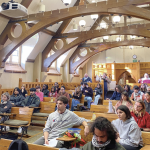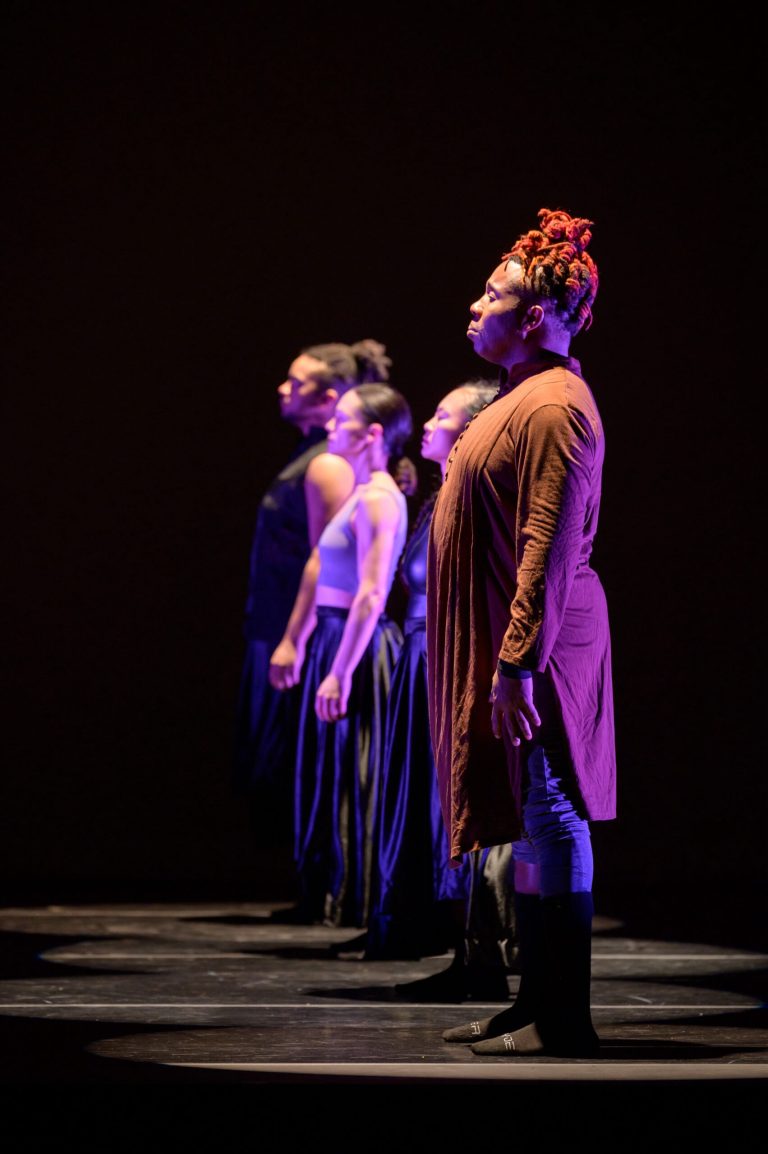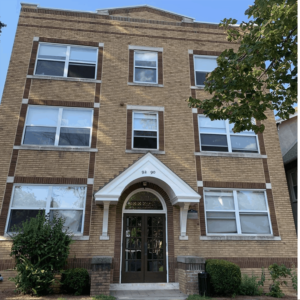Daniel J. Nesbitt ’22
Managing Editor
The U.S. News & World Report rankings for 2021 were released on Monday, Sept. 14, placing Trinity in a tie at #44 among National Liberal Arts Colleges, an increase of two from last year’s #46. Trinity tied for #44 with Denison University in Granville, Ohio and Union College in Schenectady, New York.
Though President Berger-Sweeney has not yet published any official communications on the matter, Chief of Staff to the President Jason Rojas told the Tripod that though “rankings are not an adequate reflection of quality, we are pleased that others are taking notice of our progress and that the measures in which we improved align with the things we care about.”
In an email to alumni, Vice President for College Advancement Michael Casey wrote that Trinity’s increase in rank “was driven by steady improvements in a number of categories” including “graduation rate performance,” “social mobility,” “alumni giving,” and “financial resources.” His email also announced that the College is “planning an exclusive webinar that will go into a bit more depth on the rankings sometime in the very near future,” however no further details have been announced as of Monday, Sept. 21.
This year’s U.S. News rankings methodology saw graduation rate performance, as measured by a comparison of actual and predicted six-year graduation rate, accounted for 8% of the overall ranking. Similarly, social mobility as measured by the graduation rates of Pell Grant students accounted for 5% of the overall ranking. Alumni giving, measured as the “average percentage of living alumni with bachelor’s degrees who gave to their school” between 2017 and 2019, accounted for only 3% of the 2021 overall ranking, a decrease from 5% for the 2020 rankings. It remains unclear to what extent Trinity’s improvement in alumni giving, as described by Casey, is responsible for Trinity’s increased ranking given the lower importance of alumni giving in this year’s methodology. Finally, financial resources, measured as the average per-student spending on “instruction, research, student services and related educational expenditures in the 2018 and 2019 fiscal years,” accounted for 10% of the 2021 overall ranking.
When compared to the rest of the NESCAC, Trinity has the second lowest ranking, ahead of only Connecticut College ranked #51. The next lowest ranked NESCAC school is Bates College, ranked #22, followed by Wesleyan University at #20 and Colby College at #15. Among the other NESCAC schools, Amherst, Bowdoin, Hamilton, Middlebury, and Williams are all ranked within the top ten of the 2021 rankings. Tufts University, however, is ranked within the “National Universities” category instead of the “National Liberal Arts Colleges” category. Overall, Trinity’s current ranking remains significantly lower than the rest of the NESCAC, with Connecticut College being the only exception to the rule.
The Tripod also examined the change in U.S. News rankings over time among NESCAC schools using a historical dataset available online at andyreiter.com. The 1-year, 10-year, and 20-year change in U.S. News rankings is shown in the figure below. Trinity, along with Hamilton, was one of only two schools in the NESCAC to improve in ranking from 2020 to 2021. Over the past ten years, however, Trinity’s U.S. News ranking has decreased by eight, tied with Wesleyan for the second largest decrease in the same time period for NESCAC schools; only Connecticut College’s ranking decreased more in the same time period. Both Colby and Hamilton increased in ranking by eight and nine respectively over the same time period. Over ten years the rankings for Amherst, Bates, Bowdoin, and Williams have remained consistent, while Middlebury’s ranking has slightly decreased.
Over the past twenty years, Trinity’s U.S. News ranking has decreased by 21, the second-largest decrease behind only Connecticut College whose ranking has decreased by 24 in the same time period. Wesleyan’s ranking has suffered a decrease of ten over the time period, while no other NESCAC school ranking has decreased by more than three in the twenty-year period. As shown in the figure below, the rankings of Hamilton and Colby increased by twelve and four respectively, while Williams has risen by a total of two spots from #3 to #1. Tufts was excluded from analysis due to its separate classification within the “National Universities” Category.
The Wall Street Journal/Times Higher Education (WSJ/THE) College Rankings for 2021 were also recently released on Thursday, September 17, with Trinity ranked #92, a decrease of five from last year’s #87. Compared to the rest of the NESCAC, Trinity has the second-lowest ranking, ahead of only Connecticut College ranked #106. Amherst and Williams ranked highest among NESCAC schools, tied for #21. Unlike the U.S. News & World Report rankings, the WSJ/THE rankings do not split the rankings into “National Liberal Arts Colleges” and “National Universities,” which could explain for the generally lower absolute rankings among the NESCAC schools.
The U.S. News and WSJ/THE rankings each have unique methodologies for determining school rankings. The former considers 17 different metrics while the latter considers 15 metrics, and though some of the metrics are similar, many are also weighted differently across the two methodologies.
With respect to COVID-19’s potential impact on rankings, U.S. News made clear that “the data used in these rankings pertain to fall 2019 and earlier,” meaning the disruption caused by COVID-19 on higher education “could not impact the data schools submitted to U.S. News.” Additionally, the WSJ/THE rankings clarified that the regular survey related to student engagement “had to be canceled for this year,” so the rankings used the student engagement scores “obtained by institutions last year.”
The Tripod reached out on Thursday to Rojas and Director of Media Relations Stacy Sneed for comment prior to the publication of this article. Rojas acknowledged receipt of the questions, but indicated that the College would likely be unable to respond to questions by the print date of Sept. 22.








+ There are no comments
Add yours